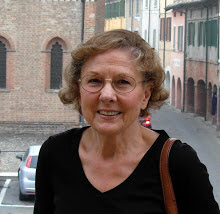- Learning about Claude Monet and his work
- Painting in the style of Monet
- Introducing Impressionism
Impressionism, impression
RESOURCES
In 1900, a Parisian journalist interviewed Monet about his life and published this interesting autobiography in the newspaper LeTemps. Click here and scroll down to view five examples of Monet’s paintings.
BACKGROUND
The Life of Claude Monet
Claude Monet was the leading figure of French Impressionism, using loose brushstrokes and reflected colors to paint the immediate visual impression of light on a subject.
Born in 1840 in Paris, Monet was five when his family moved to Le Havre in Normandy. His father was a shipbuilder and a grocer and his mother was a singer. Growing up near the seaside with his older brother, he was aware at an early age that he wanted to become an artist. At fifteen, Monet was already well known for his charcoal caricatures that he sold to the local people. On the beaches of Normandy, he met the artist Eugene Boudin who taught him to use oil paints and encouraged him to paint outdoors, an unusual practice for the time.
Abandoning the studio altogether, Monet attempted to capture different atmospheric conditions, painting the impression of what he saw rather than what he knew. For example, green grass could look gray or yellow or blue depending on the light. He even produced several paintings of the same subject, such as his famous Haystack series, to show the effects of the changing light.
At nineteen, Monet moved to Paris to pursue his art. There he met a group of like-minded artists whose paintings were mocked as unfinished or simply an impression of a subject. The group became known as the Impressionists and eventually Monet’s studies of changing light proved to be very popular. In 1883, he moved to a home in Giverny, where in the last decades of his life, he devoted his artistic attention to the lily pond and flower gardens that he created.
In 1916, with his eyesight failing, he built an indoor studio to work on large paintings of water lilies like the one which fills a huge room in the Orangerie Museum in Paris. Although its brushstrokes appear splotchy when seen up close, the painting viewed from a distance fills the room with a beautiful and calm feeling.
Even though he was nearly blind by 1923, Monet continued to paint until he died in Giverny in 1926.
YOU WILL NEED
- Manila paper or colored construction paper (approximately 12 x 14 inches)
- Liquid tempera paints
- Paint brushes
- Containers of water to rinse brushes between colors
- Sponges to dry brushes after rinsing
- Examples of Monet’s paintings
Preparation
- Become familiar with Impressionism and the life and paintings of Claude Monet.
- Set out paper, tempera paints, brushes, containers of water, and sponges.
- Gather examples of Monet’s paintings.
- Tell the children about the life and works of Claude Monet and share the examples of his paintings. Explain that, in this session, the children will be making paintings using Monet’s style.
- Discuss how Monet painted in the style of Impressionism by working outdoors to capture the effects of light; dabbing short strokes of color directly on the canvas; painting with rapid brushstrokes–sometimes short and straight, sometimes round and swirling; leaving the brushstrokes visible and not blending the colors, letting them be mixed by the eye from a distance; portraying the impression or effect that a subject leaves on the painter rather than the details he knows exists.
- Since taking a classroom of children outdoors to paint isn't always doable, have the children paint scenes from their memory using his style. The children should concentrate on dabbing paint on the paper without blending the strokes or colors.
- If working with a small group of children, it would be a wonderful experience to paint outdoors.
- Seeing Monet's actual paintings is far more effective than looking at pictures. The paintings shown in this lesson were done in the classroom after seeing a retrospective of Monet’s work in a nearby museum.
- Discuss what makes Monet’s paintings good examples of Impressionism.
- Point out the characteristics of Monet’s style that can be seen in the children’s paintings.
- Have the children describe how they felt while painting in the style of Monet.
- Can I paint what I see outside the window?
- Painting so quickly makes my brushstrokes go in all directions.
- I really like the paintings Monet did of the haystacks. I was on a farm where I saw a field of hay growing.
- Since we cannot go outside to work, painting what you see through the window is a good idea.
- Monet used a variety of brushstrokes to show textures, such as swirling for the sky and short and choppy for the water.
- If you can remember how you felt when you saw the hay field, it would make a good subject for your painting today.



